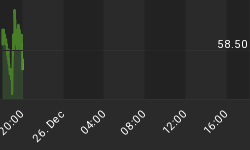"Your plan should foresee and provide for a next step in case of success or failure." - B.H. Liddell Hart (1895-1970)
Losses Highlight Need For Formal Risk Management
Wednesday's painful session in stocks brought the NASDAQ's (QQQQ) total loss from the 2007 highs to over 51%. The S&P 500 (SPY) is nearing a 50% loss as well. These depressing figures underscore the need for investors to have a formal and well defined risk management plan. Said another way, you should have started cutting losses a long, long time ago. However, it is dangerous to believe it is too late to adopt a strategy to cut losses in the event of further declines in asset prices. It is dangerous to assume the worst is over. Prudent money managers plan for the worst and keep an open mind about the possibility of more favorable outcomes.
Financials May Lead Market Even Lower
The absence of any sustained follow through after "one-day wonders" in stocks on 10/10/2008, 10/28/2008 and 11/13/2008 should not be ignored by investors. Sustained buying is simply not present, even at increasingly more attractive valuation levels. While the 2002-2003 lows in stocks may hold, investors would be wise to have contingency plans in place. Financial stocks, which have lead the market lower, broke below their 2002 lows in early October 2008 and have not been able to sustain a rally since. All the Dow stocks listed below have also broken below their 2002 lows (on a closing basis):
Alcoa
American Express
Citigroup
Dupont
General Electric
General Motors
Home Depot
Merck
Pfizer
In last week's update, Where Valuations and Technical Support Intersect, we presented the chart below showing possible areas of support for stocks. The S&P 500 closed firmly below 840 on Wednesday finishing at 806. That places us only 5% from the lowest intraday low of 768 made in October of 2002. A failure to hold near 768 would open the door to 716 and 605. A decline from 806 to 605 would mean an additional 25% hit to investors' hard earned principal. We are not forecasting a decline to 605. We are simply stating 605 is in the realm of possibility based on both valuations and technical support. My sense is a decline to 605 would catch most investors unprepared since they assume "we must be close to a bottom" or "it is too late to sell now".


While I wish the news was better, the charts across almost all asset classes still look awful. Significant wealth destruction could still occur before stocks find their footing (on top of what has already occurred). Seeing some higher highs and higher lows in a few blue chip stocks would be a welcome sign. We still are seeing lower highs and lower lows - not a good sign. All 30 Dow stocks are below their 200-day moving average - again, not a good sign. As stated many times, stocks remain firmly in a downtrend. Until we see sustained evidence to the contrary, protecting principal remains the primary objective. As a result, contingency plans must be updated as events unfold. If we can hold in the 768-800 range on the S&P 500, then we can safely file away our 716 and 605 contingency plans.















